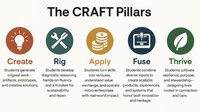The benefits of knowing how to read go far beyond academic achievement. Literacy leads to personal empowerment, academic success, informed decision making, active civic participation, improved self-esteem, and increased economic opportunities.
However, I want to highlight some additional reasons to support the need for universal literacy. Informed decision making and active civic participation (especially in today’s political climate) are greatly enhanced when you can read the ballot when voting, read the website of a community organization, or read the candidate’s position statements on important issues. On a more personal level, literacy can help someone write a letter to a distant relative, or a critically important reason for literacy is the ability to read the label on the prescription bottle so you can give your child or yourself the correct dose of medicine.
The National Institutes of Health and World Health Organization estimate that only two to five percent of young readers have cognitive impairments severe enough to prevent them from acquiring the skills they need to become fluent readers. By these estimates, we can say that roughly 95 percent of students have the capacity to learn to read with instruction grounded in the science of reading. The body of research known as the science of reading has shown that we can develop fluent readers using explicit and systematic instruction in critical components of language, such as phonology, orthography, morphology, semantics, and syntax.
Even in countries where literacy is an embedded civil right in terms of a right to education, the number of proficient readers is not at 95 percent. In the US, on the National Assessment of Educational Progress (NAEP) over the last 20 years, and consistent with the most recent results released in June 2023, the number of proficient readers in 4th and 8th grade has been around 33 percent and the numbers of proficient readers are even lower for Black and Hispanic students. As we are one of the wealthiest nations in the world, literacy is not dependent on a country’s wealth. So, let’s talk about why the gap exists and what we can do about it.
Reframing the Achievement Gap to the Opportunity Gap
Analyses have shown that as much as 85 percent of public-school curriculum is delivered by reading. The reason the proficiency chasm has developed is not because of a difference in learning ability or capacity to learn to read between the various demographic groups, but a difference in the opportunities to learn. It is so critical that we shift how we think about the cause of the gap, because then we will think differently about the solutions to start closing the gap. It is not the fault of the students, but rather the opportunities offered to them in our systems, schools, and districts.
A new study released recently from the National Council for Teacher Quality, Teacher Prep Review: Strengthening Elementary Reading Instruction, found that, even today, only twenty-five percent of teacher preparation programs adequately cover all five core components of reading instruction. Additionally, more than forty percent of these programs continue teaching reading instructional practices that have been debunked by science.
I was one of those teachers who didn’t know what I needed to know to teach reading early in my career. I am sure the US is not the only country with this challenge. Literacy for all should be a global effort regardless of a country’s language, wealth, or political or economic standing. Training teachers on the
scientific evidence and providing high-quality learning materials will help them use their knowledge to enhance or modify instruction to meet the individual needs of their students.
We need to focus our attention on the opportunities that we can provide to ALL students moving forward like high quality curriculums and access to highly trained teachers. And we have to think of the systems, structures and leadership needed in our schools as well. This is why I have joined with the World Literacy Summit and 320 participants in signing “The World Literacy Summit 2023 Oxford Declaration, which calls for quality of education and universal literacy as global development priorities.
Literacy is a civil right for every child in our country. This is a student’s right. It is important for teachers to understand how a student learns to read—to know how to apply the science of reading in their classroom through structured literacy.
Programs should themselves be based on the research and ideally have their own evidence or gold standard studies that state that the scope and sequence and implementation models of the program have been studied in treatment/control, pretest/post-test in real classrooms and found to be effective. This is a foundational principle for evaluating efficacy of literacy instruction.
If we believe that literacy is a civil right, then we need to:
- Reframe the reason for the gap from an achievement gap to an opportunity gap
- Provide access to teachers trained in the science or evidence of reading
- Support the use of high-quality literacy instruction and programs
Until literacy becomes an official civil right by law, these components will help move us toward equal opportunity in our schools regardless of race, religion, or other characteristics. Literacy for all requires us to prepare our teachers with knowledge of the science of reading and provide access to students with programs that have been proven effective through rigorous research.
About the Author
Dr. Liz Brooke is a former educator who currently serves as the Chief Learning Officer at Lexia. She was an invited speaker at the recent World Literacy Summit in Oxford, England. This article is based on her presentation there.











